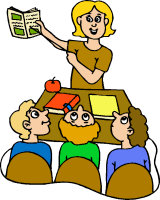Unit 18 Assessment types and tasks

The knowledge acquired in this unit
is so relevant because always is necessary to measure students previous and
recent knowledge in order to know their progress, assessment
is not just essential for teachers, but also for students because through a
test they realize what they know and what they need to know. We can assess
students formallyand informally, the first one is when
we just observe students and give feedback and informally is when give students a test in order to get a
grade.
At the begging of the school year
we can apply a diagnostic test to have a brief idea
about what students know or the level of knowledge they have. If we want to
know the level ok knowledge a students has to place him/or her in the appropriate
level we can use a placement test, but toknow how well
learners are getting the knowledge we ca use a progress test. Finally, at
theend of the school year we can use an achievement test to
know how much pupils learnt during the whole year. All of these sorts of tests
include objectiveand subjective questions which are
aimed to get specific judgment to the answers and evaluate students’
performance in their skills.
I will apply this knowledge in the
classroom by using tests according to the students’ situation level and time,
for example, if it is the beginning of the school year I will use a diagnostic
test and not an achievement test because it would not be fair. Also, I will use
informal assessment to measure how students use new vocabulary, structures
without being graded just to get feedback or comments.
For more
information you can use the following websites:
- Learning and Laboratory.Retrieved from://tll.mit.edu/help/types-assessment-and-evaluation
- A Sampling of Types of Formative Assessment. Retrieved from: http://www.isbe.net/common_core/pdf/da-form-asmt-chart.pdf
- CENTER FOR TEACHING AND LEARNING.Methods of Assessment. Retrieved from: http://ctl.utexas.edu/teaching/assessment/planning/methods





